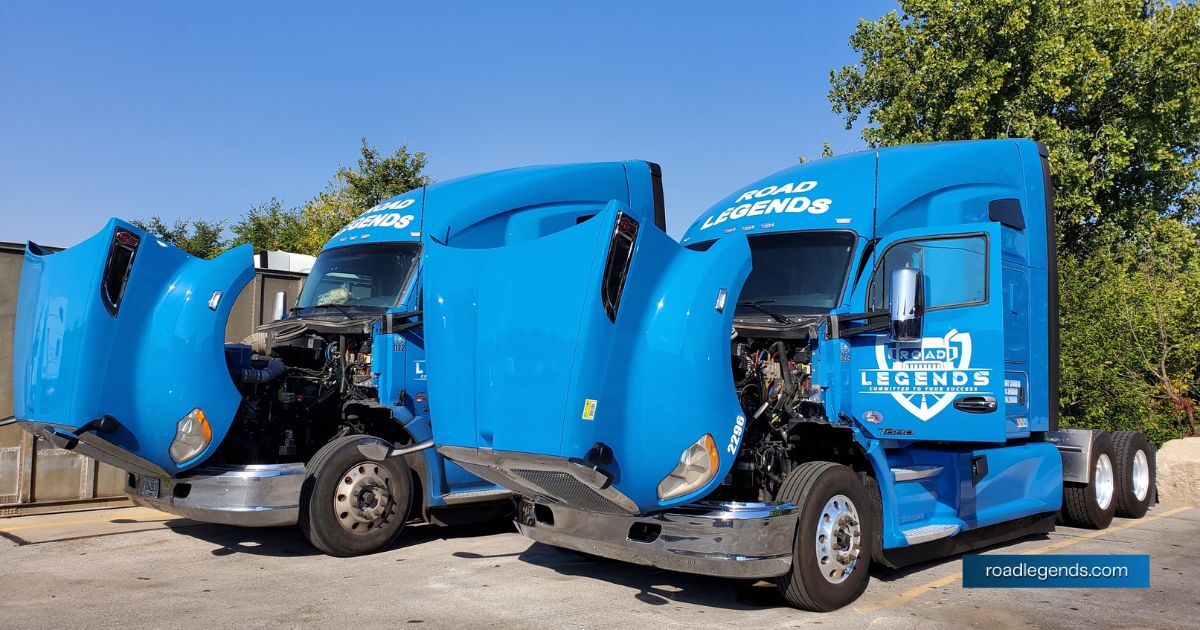

Keeping track of vehicle maintenance is essential for ensuring its optimal performance, longevity, and safety. One of the most effective tools for organized record-keeping is a vehicle maintenance log.
With that thought, imagine having a powerful tool that can help you stay organized, save time, and ensure your vehicle performs at its best.
Let’s unveil 11 game-changing templates that will transform how you approach vehicle maintenance.
A vehicle maintenance log is a systematic record-keeping tool used to track and document all maintenance activities performed on a vehicle.
It serves as a central repository for recording vital information such as maintenance dates, replacements, and inspections from yourself or truck repair shops .
By maintaining a detailed log, trucking owner-operators can keep track of maintenance schedules, identify recurring issues, and ensure that timely maintenance tasks are performed.
The battery is a crucial component of any vehicle, and monitoring its health is essential. By consistently updating the log with battery maintenance activities, replacements, and tests, you can stay informed about the battery's condition and schedule timely replacements when necessary.
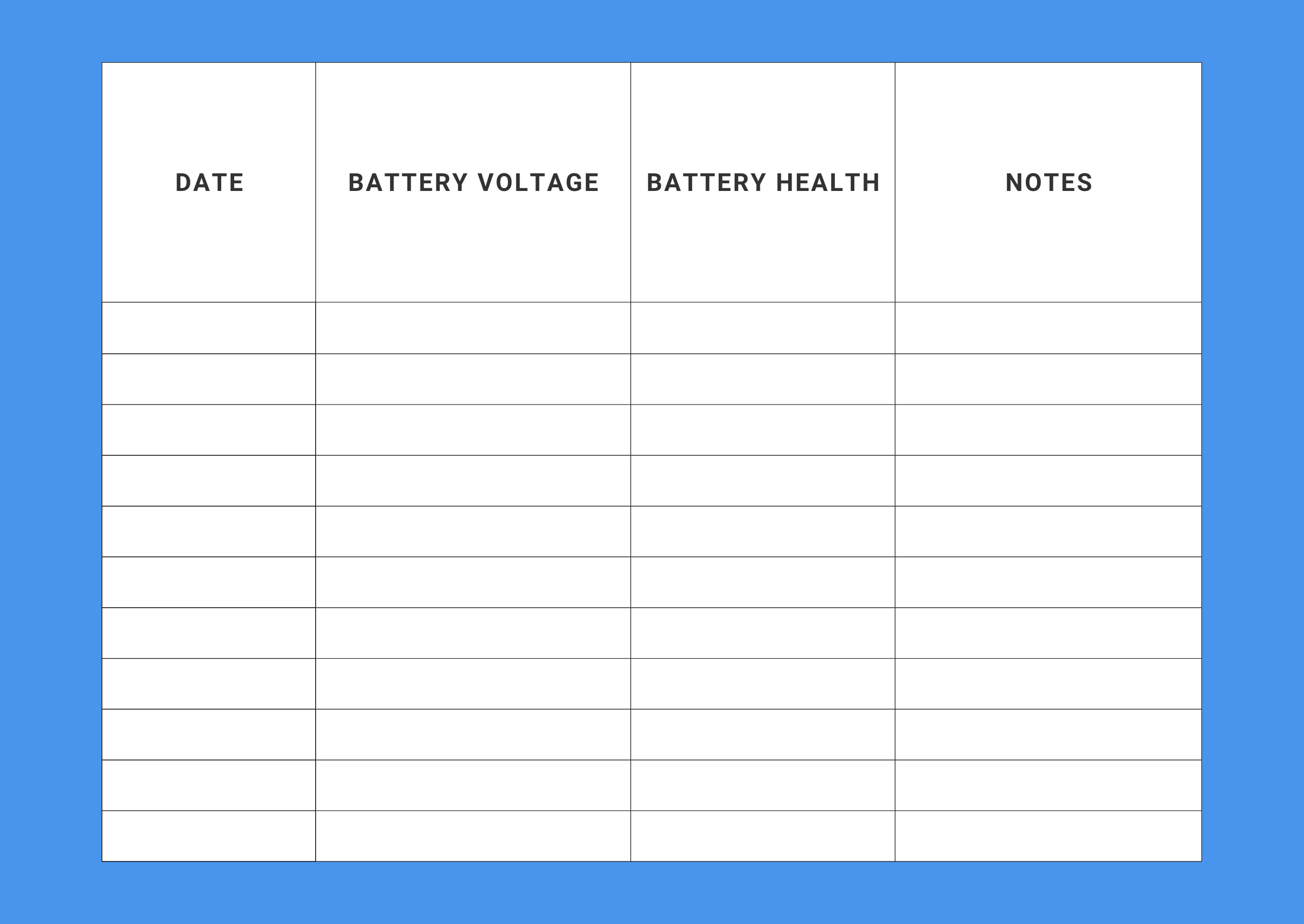
Example of use:
Brake maintenance enables you to document brake inspections, pad replacements, rotor resurfacing or replacements, and any other brake-related maintenance activities. By keeping a detailed log, you can monitor the condition of your vehicle's brakes and ensure they are in optimal working order.
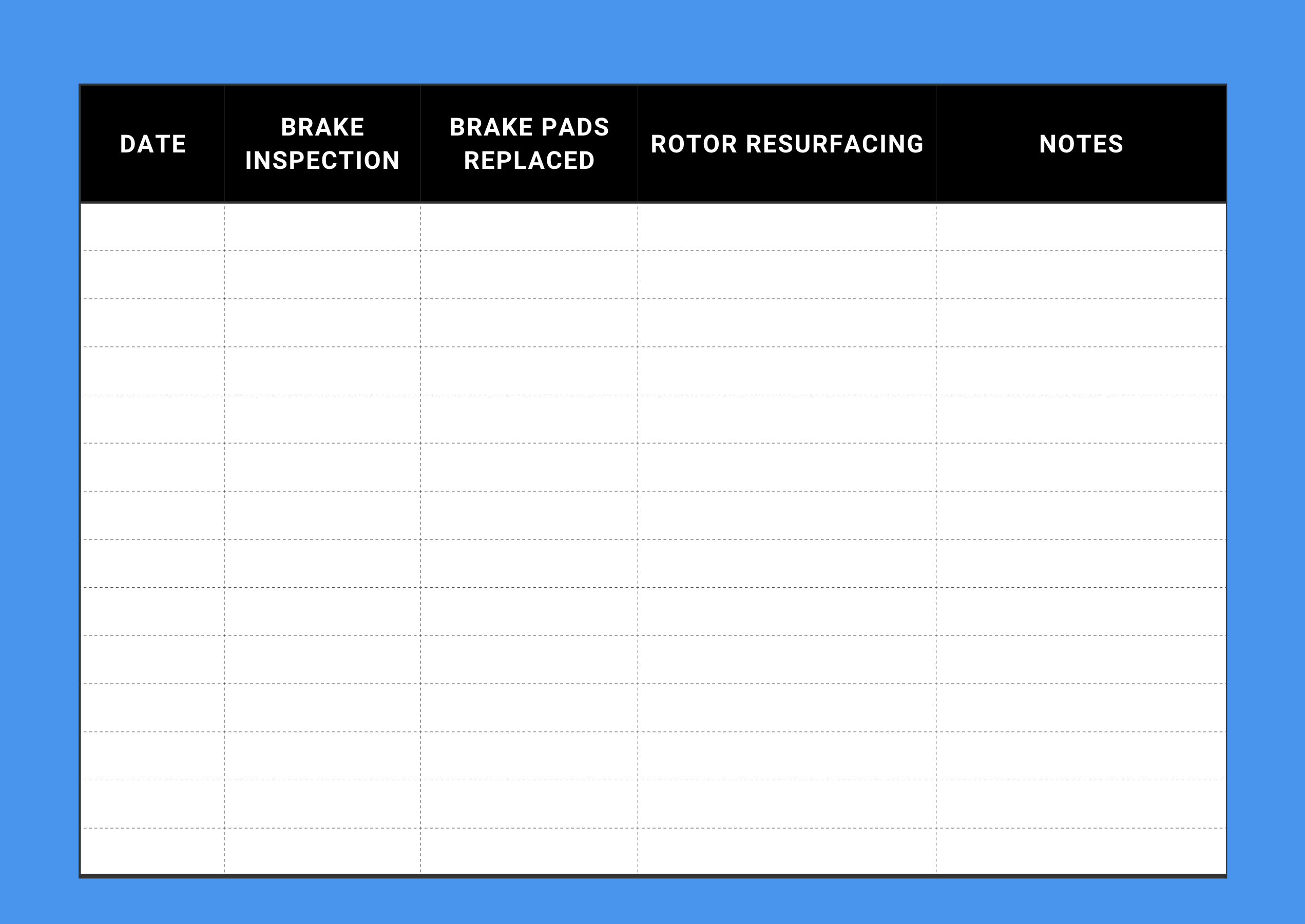
Example of use:
Brake Pads Replaced
Brake fluid topped up
Squeaking noise observed
Brake lines flushed
The next inspection should be in July 2024.
Proper lubrication is crucial for various vehicle components' smooth operation and longevity. Lubrication maintenance allows you to record lubrication activities such as oil changes, greasing, and the type of lubricant used.
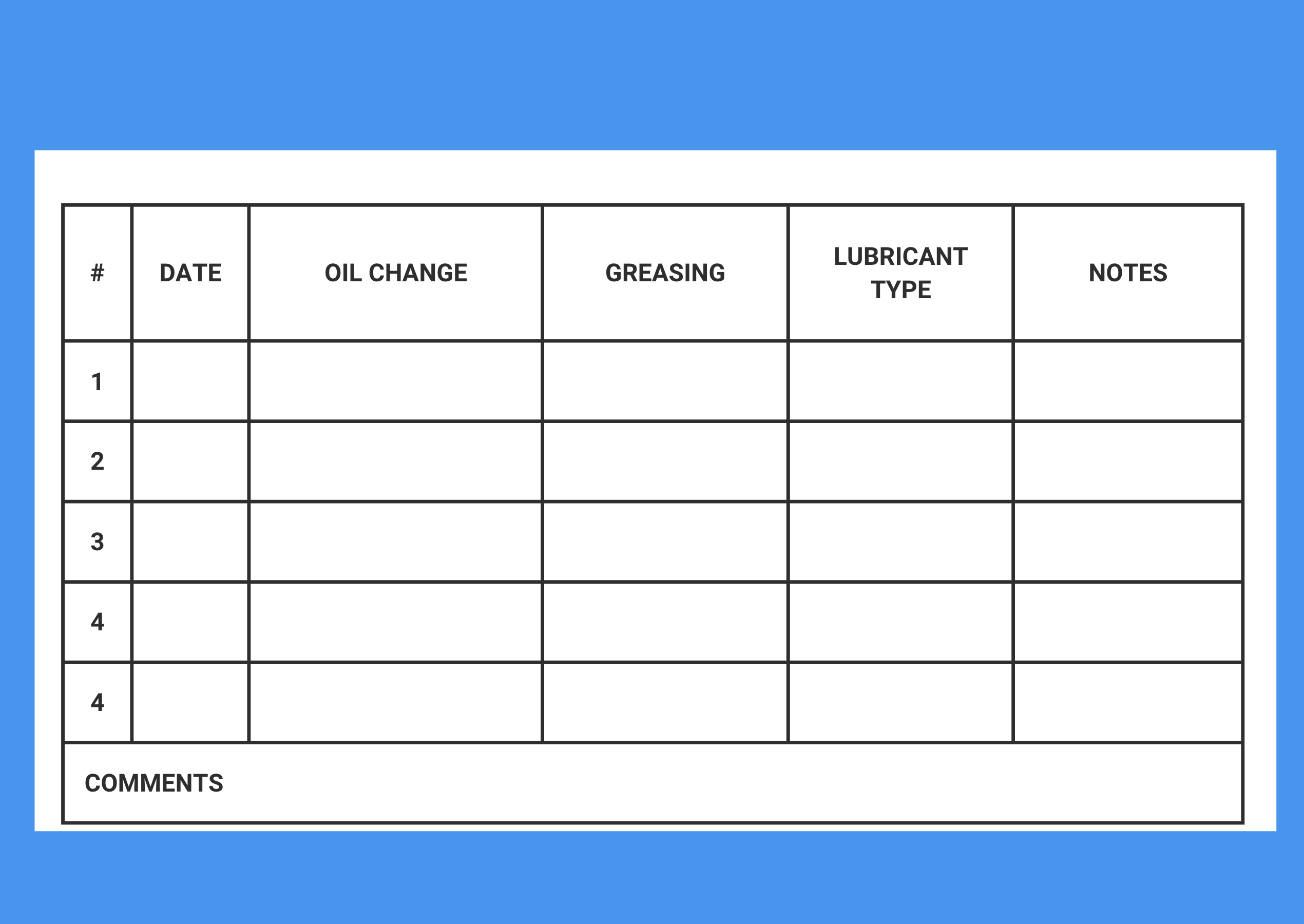
Example of use:
Replaced engine oil filter
Lubricated door hinges and locks
Lubricated trunk latch
A vehicle maintenance log for mileage or odometer readings allows you to document the mileage at specific intervals, such as during routine maintenance or oil changes. This information provides insights into the vehicle's usage patterns and helps determine when specific maintenance tasks should be performed.
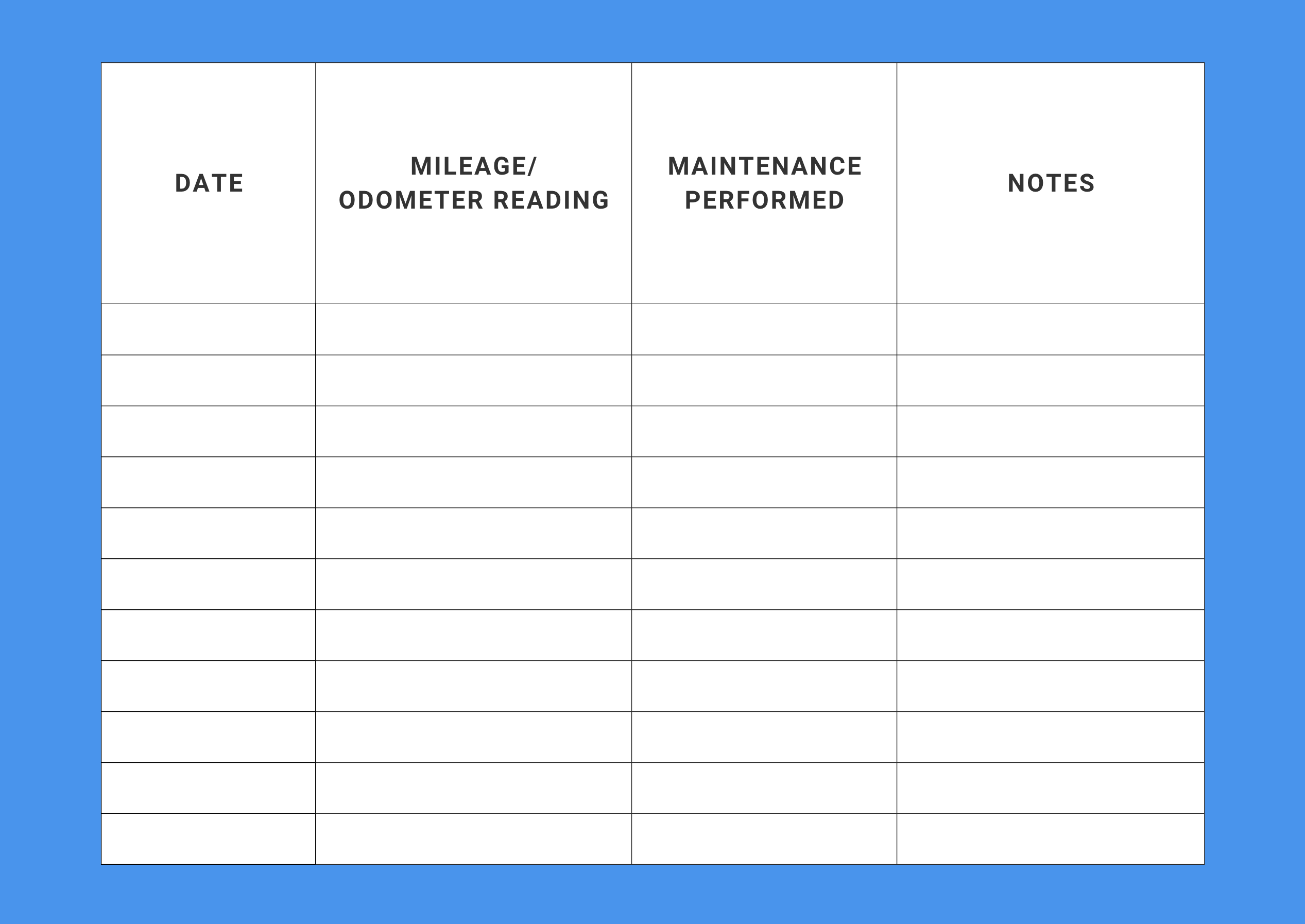
Example of use:
Used synthetic oil
Replaced worn-out tires
Air Filter Replacement
Cleaned mass airflow sensor
By maintaining a log specifically for oil filter and motor records, you can ensure that your vehicle's engine receives the necessary maintenance at the recommended intervals. This helps maintain optimal engine performance and prolongs the engine's lifespan.
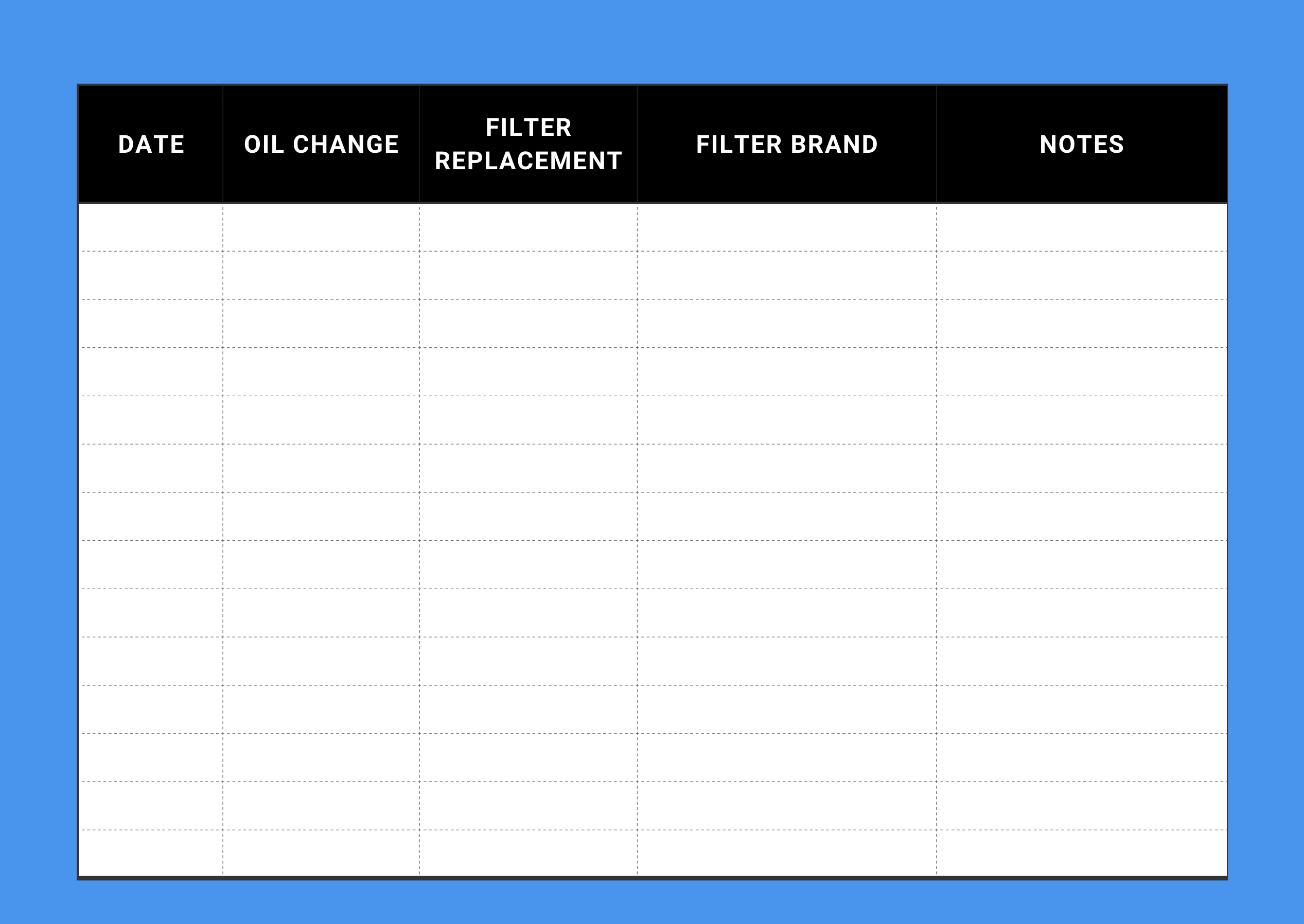
Example of use:
Used synthetic oil
Replaced worn-out gasket
Changed oil viscosity

Properly functioning mirrors are crucial for safe trucking . A vehicle maintenance log template for mirrors allows you to track mirror adjustments, repairs, or replacements. By documenting mirror-related maintenance activities, you can ensure that your mirrors are in excellent condition, providing clear visibility and enhancing overall safety on the road.
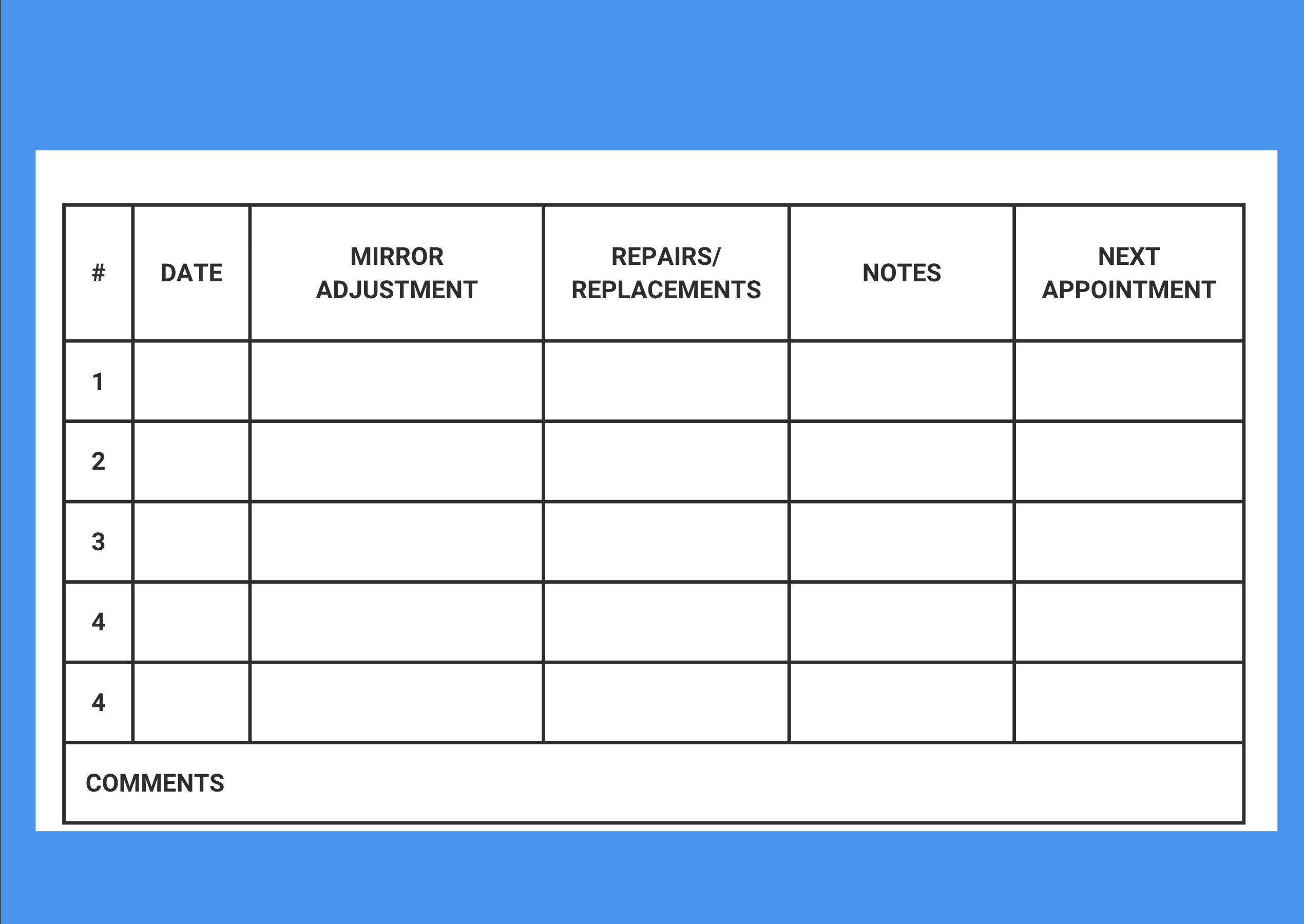
Example of use:
Adjusted driver-side mirror
Replaced passenger-side mirror
Repaired rearview mirror
Monitoring tire condition and pressure is essential for vehicle safety and fuel efficiency. A vehicle maintenance log template for tires enables you to record tire rotations, inspections, replacements, and tire pressure readings.
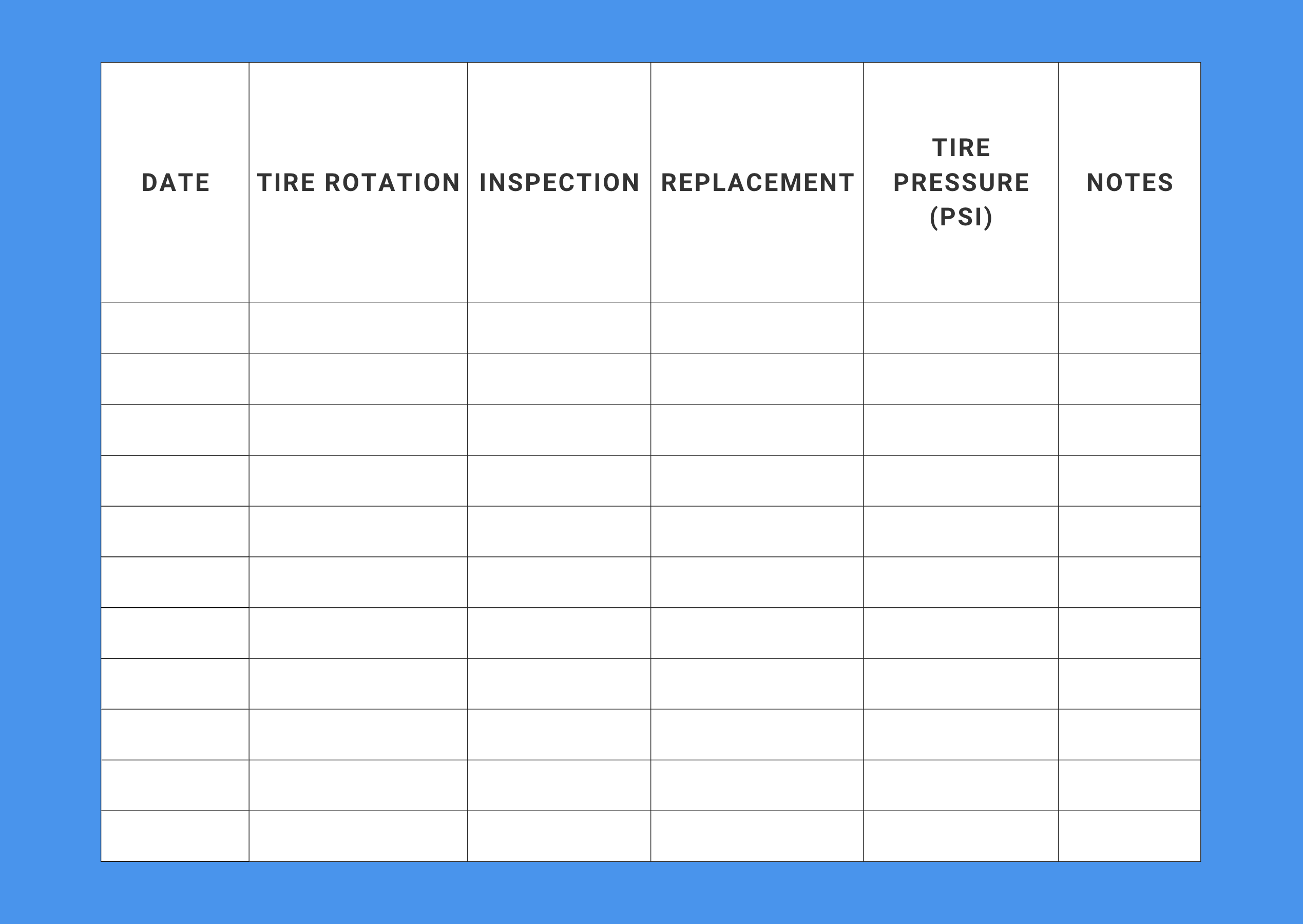
Example of use:
Tire Pressure (PSI)
Front: 32, Rear:32
Rotated tires to ensure even wear
Front: 35, Rear: 34
Replaced two worn-out tires
Front: 33, Rear: 31
Noted slight tread wear on front tires
The suspension system plays a vital role in providing a smooth and comfortable ride. By maintaining a detailed log, you can ensure that your vehicle's suspension system is in good working order, enhancing ride quality and safety on the road .
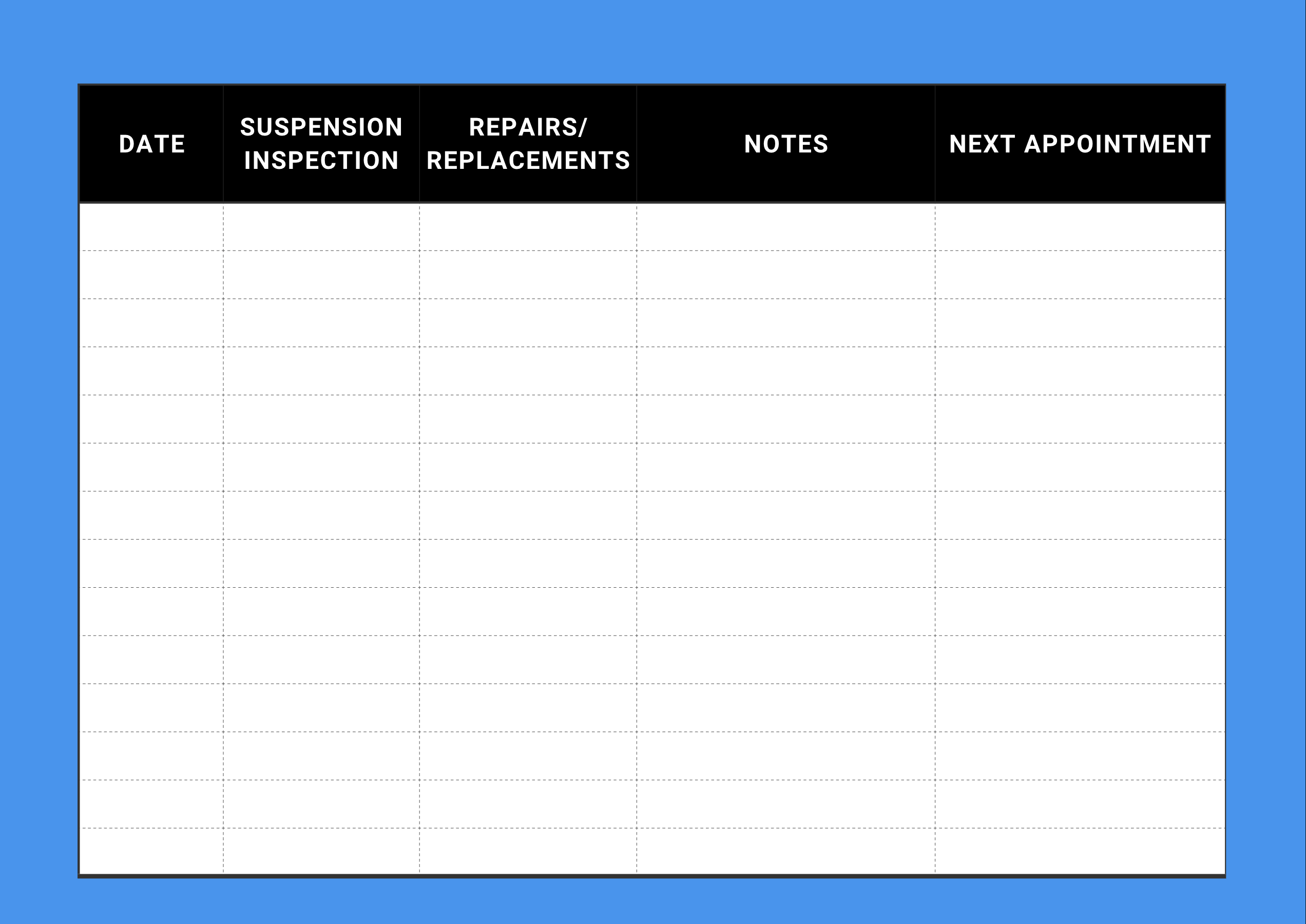
Example of use:
Lubricated suspension joints and bushings
Replaced front struts
Adjusted rear shocks
Keeping a comprehensive record of fluid checks helps you stay on top of your vehicle's maintenance needs. By using a vehicle maintenance log template specifically designed for fluid checks, you can easily track the dates of fluid checks, note the levels and conditions of various fluids, and ensure that necessary top-ups or replacements are done at the appropriate intervals.
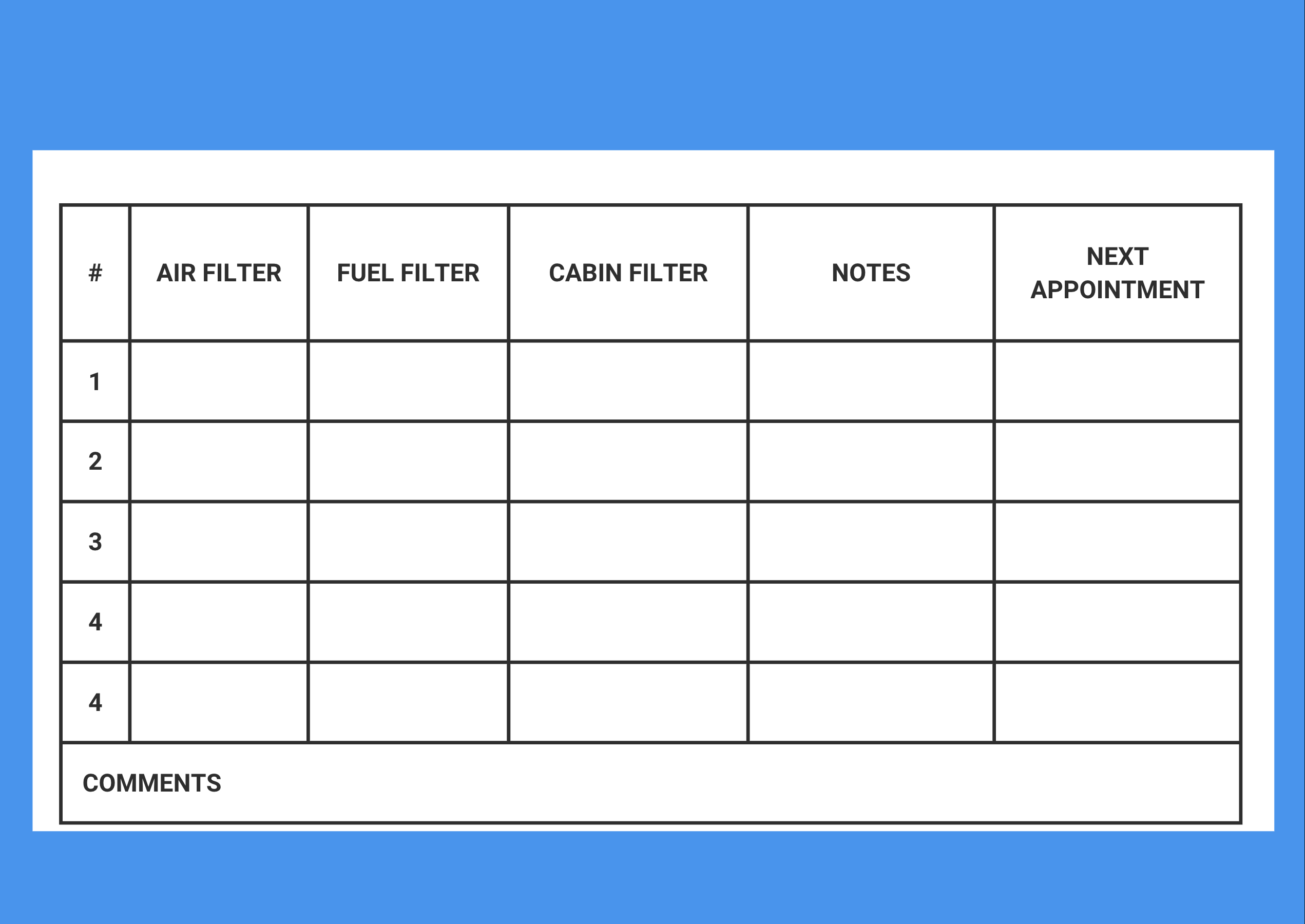
Example of use:
Power Steering Fluid
Coolant reservoir replaced
Brake fluid flushed and replaced
Power steering pump replaced
Filters play a vital role in keeping your vehicle's systems clean and efficient. This log template serves as a helpful reference for ensuring timely filter replacements, monitoring the overall condition of your vehicle's filters, and promoting the longevity and efficiency of its systems.
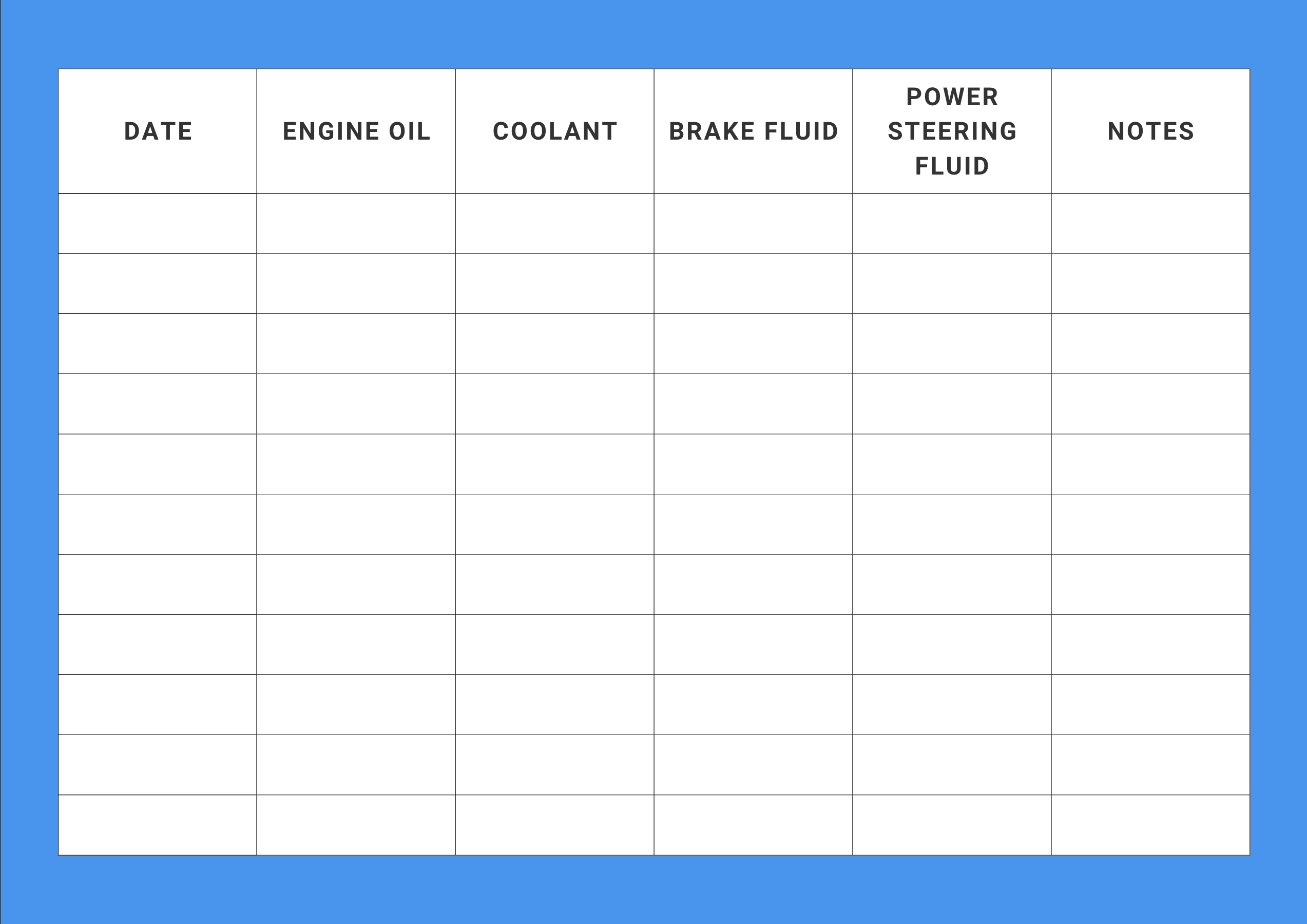
Example of use:
Used OEM filters
Used aftermarket fuel filter
Used premium cabin filter
The electrical system is a critical component of any vehicle, powering various functions and ensuring smooth operation. Regular inspections and maintenance of the electrical system are necessary to identify potential issues and maintain optimal performance.
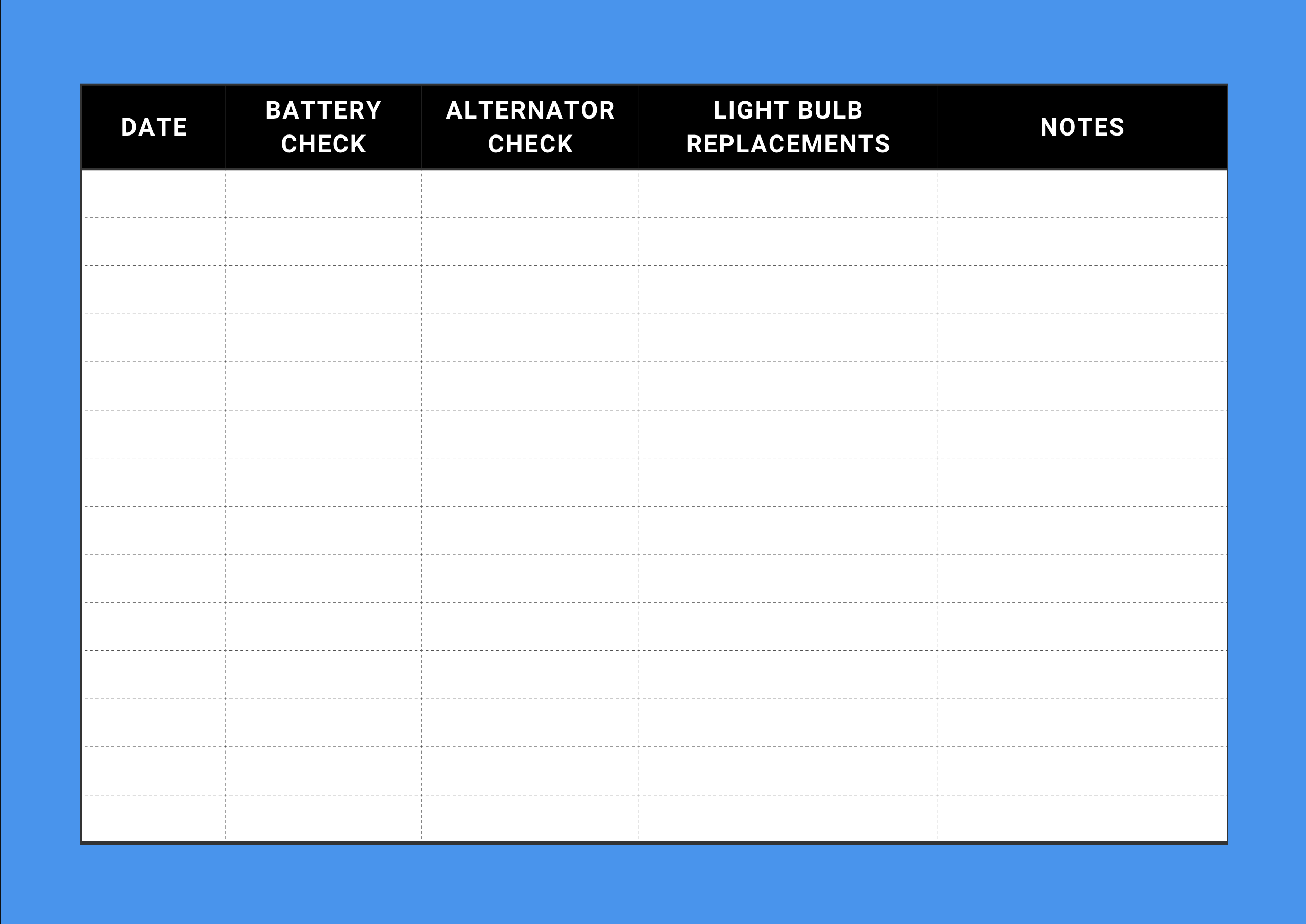
Example of use:
Light Bulb Replacements
Replaced brake light bulb
Replaced headlight bulb
Cleaned battery terminals
Replaced taillight bulb
Maintaining your vehicle at the appropriate intervals is crucial for its performance and longevity. Different maintenance tasks have specific recommended schedules. Regular maintenance activities include oil changes, filter replacements, tire rotations, brake inspections, and fluid checks.
However, the specific maintenance needs may vary depending on factors such as the vehicle's make, model, age, and usage patterns. Consult your vehicle's owner's manual or seek guidance from a trusted mechanic to determine the ideal maintenance schedule for your vehicle.
To establish an effective vehicle maintenance record-keeping program, consider the following tips:
Maintaining a vehicle maintenance log is an ongoing process. Continuously update and review your log to track maintenance activities accurately. Explore additional templates or customize existing ones based on your vehicle's unique needs.
Remember to consult professional mechanics for expert advice on specific maintenance tasks. By establishing a robust vehicle maintenance record-keeping program, you can ensure that your vehicle receives the necessary care and attention it deserves, leading to enhanced performance, longevity, and safety.